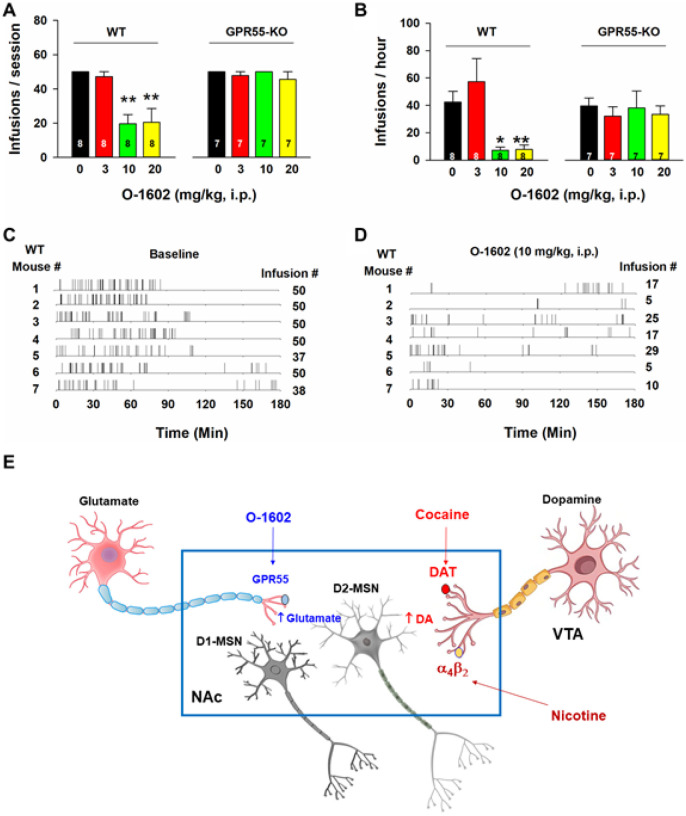Figure 6.
Effects of O-1602 on nicotine self-administration in WT and GPR55-KO mice. A/B: Systemic administration of O-1602 (10 and 20 mg/kg) significantly inhibited nicotine self-administration in WT mice, but not in GPR55-KO mice. C/D: Representative records of nicotine infusions after the vehicle (C) or O-1602 administration (D), illustrate that O-1602, at 10 mg/kg, caused cessation of self-administration. E: A proposed working hypothesis explaining how GPR55 agonism reduces nicotine self-administration. Briefly, cocaine or nicotine may increase extracellular DA levels in the NAc by blockade of DA transporter (DAT) or activation of a4b2 nicotinic receptors located on midbrain DA neurons or NAc DA terminals, respectively, which has been thought to underlie intravenous drug self-administration. Activation of GPR55 expressed on glutamate terminals projected from the cortex and hippocampus increases glutamate release in the NAc, which subsequently counteracts DA effects on postsynaptic medium-spiny neurons (MSNs), particularly in D2 receptor-expressing MSNs (D2-MSNs) where glutamate and DA produce opposite effects on neuronal activity. ** p<0.01, compared to the vehicle control group.

